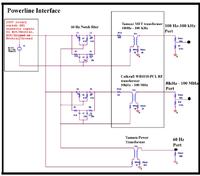mallyajiggs
Newbie level 4
- Joined
- Feb 6, 2010
- Messages
- 7
- Helped
- 0
- Reputation
- 0
- Reaction score
- 0
- Trophy points
- 1,281
- Location
- Providence
- Activity points
- 1,338
Hey guys, sorry not an electronics guy so please help
I am building a 60 hz notch filter and have the components for that, but i am not sure on what i can build the circuit ?
This will be connected directly to the mains( residential ac power outlet).
I assume i cannot use breadboards to build this circuit on ?
any suggestions ? other than using a wooden board ?
I am building a 60 hz notch filter and have the components for that, but i am not sure on what i can build the circuit ?
This will be connected directly to the mains( residential ac power outlet).
I assume i cannot use breadboards to build this circuit on ?
any suggestions ? other than using a wooden board ?
